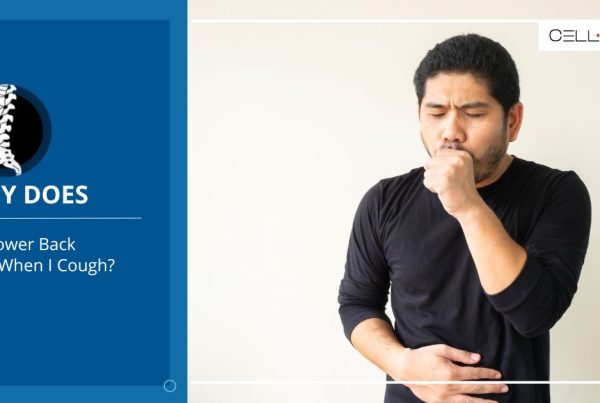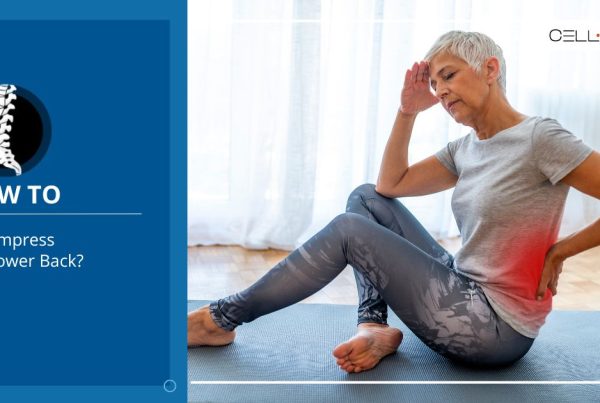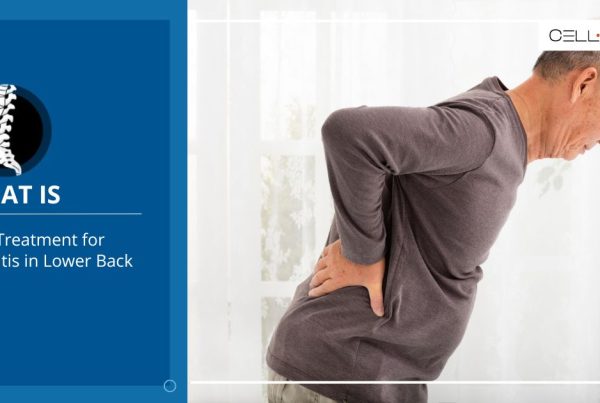Published on: October 24, 2024 | Updated on: January 18, 2025
The lower back, called the lumbar region, has five largest vertebrae. These bony structures support most of the body’s weight.
The lower back has different groups of muscles, ligaments, and tendons that work together to allow mobility. Considering its important function, it’s no surprise that it is often a hotspot for pain.
While restorative sleep can help manage pain, you may find it difficult to sleep with lower back pain. Consider changing your position if you’re wondering how to sleep with lower back pain.
You can make simple changes to your posture and sleeping positions to achieve a good night’s sleep. First, let’s understand how lower back pain might affect your sleep quality.
Does Lower Back Pain Affect Sleep Quality?
Inadequate rest and poor sleep are closely linked to lower back pain. If you have difficulty finding a comfortable position, the inability to achieve restful sleep can worsen things.
Chronic back pain sufferers often have poor sleep quality. This affects bodily functions, mood, and physical health. Lower back pain also causes nighttime awakenings due to pain surges.
Sleep deprivation impairs the body’s healing process, increasing pain sensitivity. Sleeping positions also affect spinal alignment, which causes lower back pain.
If your spine doesn’t align properly, twisting and contorting in your sleep can put extra pressure on the lumbar vertebrae, causing stiffness. The pain from stiffness gets worse throughout the day.
Best Sleeping Positions for Lower Back Pain Relief
How to sleep with lower back pain when your spine is stiff? Changing your sleeping position for spinal alignment can relieve lower back pain, helping you achieve quality sleep. Here are some sleeping positions to consider.
Sleep on Your Side
If you prefer to sleep on your side, draw your legs towards your chest and then keep a pillow between your legs.
Placing a pillow between the legs or knees when sleeping on your side helps to keep your spinal cord aligned with the pelvis and reduce pressure from your lower back.
Sleep on Your Back
Sleeping on your back evenly distributes your body weight, reducing the pressure on the lower back. You can place a pillow under your knees to relax the lower back muscles.
This will also maintain your back’s natural curve. If your lower back pain disrupts sleep, roll a towel and tuck it under your waist to keep your spine aligned.
Sleep in the Fetal Position
The fetal position refers to lying on your side with your knees drawn towards your chest. This opens up the spaces between the lumbar vertebrae, reducing tension in the spine, easing the ligaments, and reducing lower back pain.
Spinal stiffness is often the leading cause of lower back pain. Sleeping in the fetal position helps reduce stiffness in the spine. People with herniated discs may also find this position more comfortable, as it relieves the pressure from the discs.
Sleep on Your Stomach
Lower back pain makes sleeping on the stomach difficult. This is the one position that isn’t recommended when you suffer from chronic backache, as it puts more pressure on the spine.
However, if you want to sleep on your stomach, just slide a small pillow under your abdomen or pelvis. This will align the spine, relieving the stiffness and strain in the back.
How to Sleep Better With Lower Back Pain
How can you sleep with lower back pain, and what practices could relieve backache? Besides finding a supportive sleeping position, you can also apply these practical tips.
1. Reduce Caffeine and Alcohol Consumption Before Bedtime
Nighttime awakenings keep you from achieving restorative sleep. While alcohol may help you fall asleep initially, it can disrupt your sleep quality.
Caffeine, a stimulant, also makes it harder to fall asleep, keeping you from achieving restful sleep.
2. Limit Distractions
Limiting distractions such as mobile notifications and noise improves sleep quality. By keeping your phone on silent, you can achieve restful sleep.
Also, draw the curtains and turn off the lights. Using a sleep mask or earplugs also helps with sleep.
3. Pick the Right Mattress
Sleeping on a mattress that sags under the weight of your body increases lower back pain. So, if you’re stumped about how to sleep with lower back pain, purchasing the right mattress could help.
A medium-firm mattress that doesn’t sag under the weight is ideal for people with lower back pain. It supports your spine, reduces pressure, and relieves back pain.
4. Use a Firm Pillow
Using a firm pillow supports the natural spine curvature. This is of utmost importance to back sleepers. Sleeping on a thin pillow prevents your head from being pushed forward.
A firmer pillow fills the space between the mattress and the neck for side sleepers. Whatever pillow you choose, it must help you with spine alignment.
5. Engage in Gentle Exercises Before Bedtime
Performing gentle exercises such as stretching before bed can reduce lower back pain and relieve back stiffness. Knee-to-chest stretches and pelvic tilts are some stretching positions that reduce lower back pain.
When you do chest-to-knee stretches, aim to keep the knee towards your chest in position for about 30 seconds before releasing. This will reduce back stiffness.
For pelvic tilts, tighten the abdominal muscles and press your lower back into the floor. Hold the position for a few seconds before releasing.
Doing 10 to 12 reps of pelvic tilts strengthens your core, reducing lower back pain. This exercise also aligns your back.
Wrap Up
Try different sleep positions to reduce lower back pain and achieve restful sleep. Besides sleeping positions, you should also buy a supportive mattress and firm pillows. These trips will reduce the pressure on your spine and help you sleep better.
However, if your pain worsens and causes numbness, stiffness, and tingling, it’s best to see a doctor. Medical treatment such as physiotherapy would help. You can also consult a chiropractor, who focuses on the function of the spine and pelvis.
Sources
Footnotes
- Vinstrup J, Jakobsen MD, Andersen LL. Poor sleep is a risk factor for low-back pain among healthcare workers: prospective cohort study. Int J Environ Res Public Health. 2020 Feb;17(3):996.
- Marty M, Rozenberg S, Duplan B, Thomas P, Duquesnoy B, Allaert F. Quality of sleep in patients with chronic low back pain: a case-control study. Eur Spine J. 2008 Jun;17(6):839-844.
References
- Understanding Lower Back Anatomy. Spine-health. Accessed 09/02/2024.
- Sleeping positions that reduce back pain. Mayo Clinic. Accessed 09/02/2024.
- Good Sleeping Posture Helps Your Back. University of Rochester Medical Center. Accessed 09/02/2024.
- The Best Sleeping Position for Lower Back Pain (And The Worst). UCF Health. Accessed 09/02/2024.
- Alcohol and Sleep. Drinkaware. Accessed 09/02/2024.
- Sleep and Caffeine. Sleep Foundation. Accessed 09/02/2024.
- 10 Stretches to Do Before Bed. Hospital for Special Surgery (HSS). Accessed 09/02/2024.
CELLAXYS does not offer Stem Cell Therapy as a cure for any medical condition. No statements or treatments presented by Cellaxys have been evaluated or approved by the Food and Drug Administration (FDA). This site contains no medical advice. All statements and opinions are provided for educational and informational purposes only.
Dr Pejman Bady
Author
Dr. Pejman Bady began his career over 20 years ago in Family/Emergency Medicine, working in fast-paced emergency departments in Nevada and Kansas. He has served the people of Las Vegas as a physician for over two decades. Throughout this time, he has been met with much acclaim and is now the head of Emergency Medical Services in Nye County, Nevada. More about the doctor on this page.
Dr Pouya Mohajer
Contributor
Pouya Mohajer, M.D. is the Director of Spine and Interventional Medicine for CELLAXYS: Age, Regenerative, and Interventional Medicine Centers. He has over 20 years of experience in pain management, perioperative medicine, and anesthesiology. Dr. Mohajer founded and is the Medical Director of Southern Nevada Pain Specialists and PRIMMED Clinics. He has dedicated his career to surgical innovation and scientific advancement. More about the doctor on this page.









